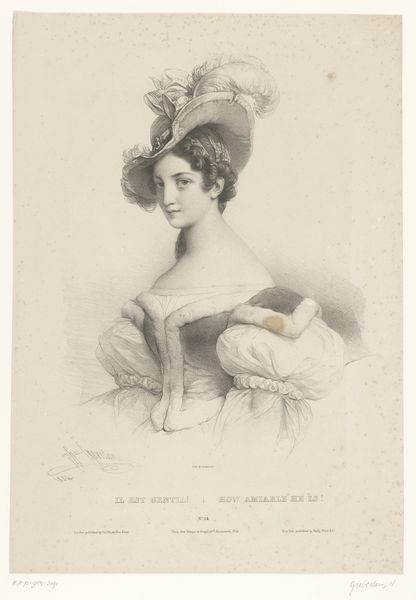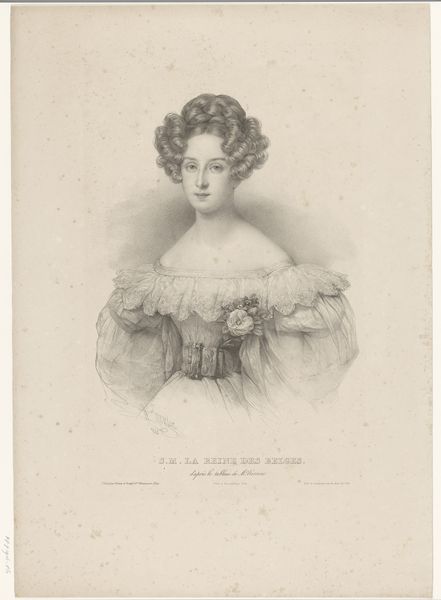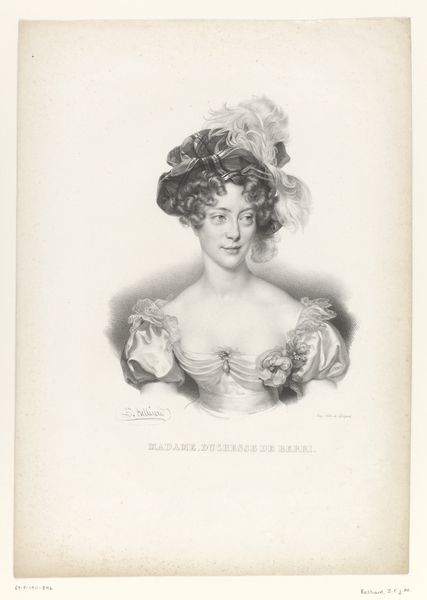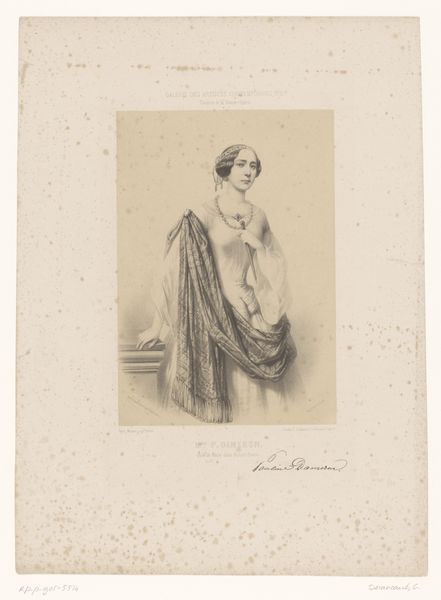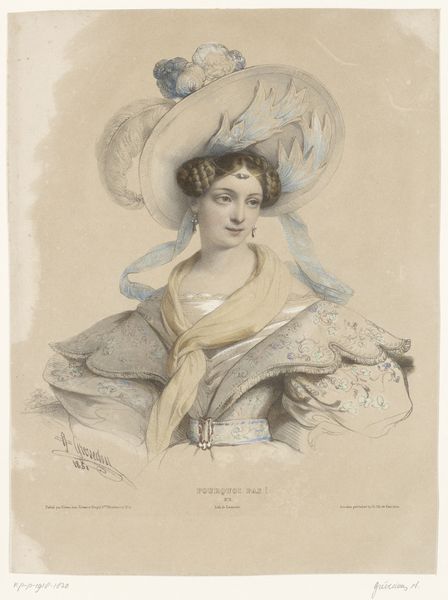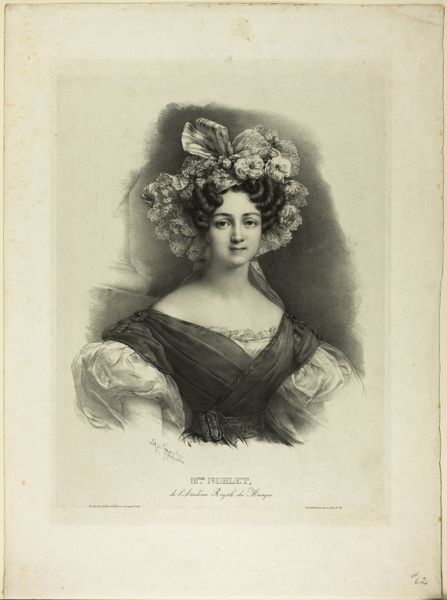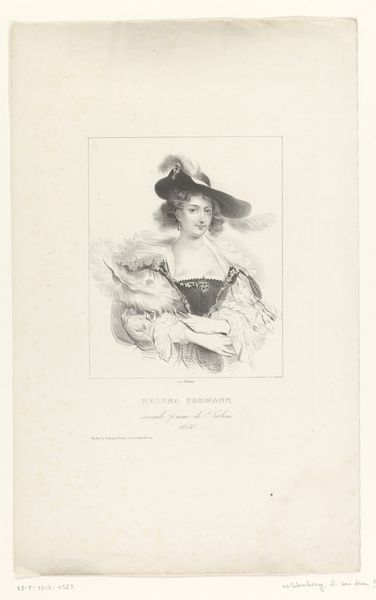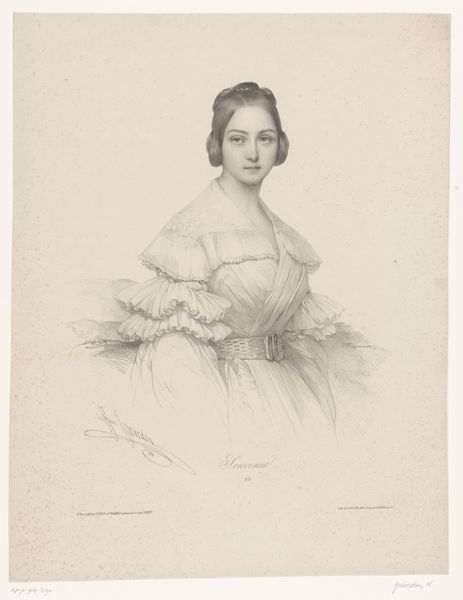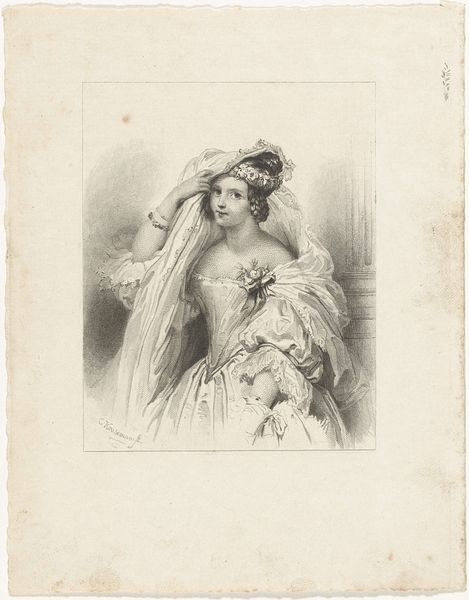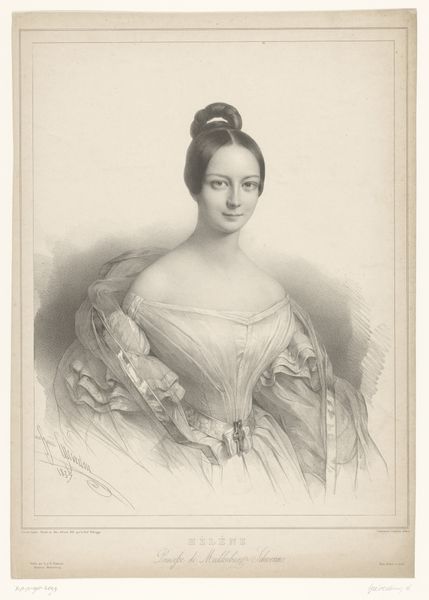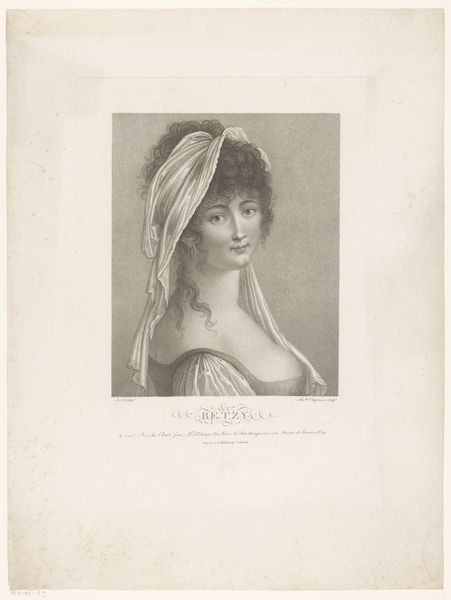
drawing, pencil
#
portrait
#
pencil drawn
#
drawing
#
facial expression drawing
#
figuration
#
pencil drawing
#
romanticism
#
pencil
#
portrait drawing
Dimensions: height 399 mm, width 273 mm
Copyright: Rijks Museum: Open Domain
Curator: This delicate pencil drawing, "Jonge vrouw denkt aan morgen," or "Young woman thinking of tomorrow," by Henri Grevedon, completed around 1833, offers a glimpse into the Romantic era's fascination with emotion and interiority. Editor: She looks wistful, doesn't she? The softness of the pencil lines gives her a vulnerable air. There's a subtle melancholy clinging to her. Curator: Absolutely. It is very characteristic of Romantic portraiture. The way Grevedon uses the pencil to create subtle gradations of light and shadow reminds us that it captures the inner psychological state, not just outer appearance. Editor: The woman’s attire, the fur stole and elaborate headpiece, also place her firmly within a particular social class and historical moment. How does that influence our understanding of "tomorrow," do you think? Was it a tomorrow of endless possibilities or one limited by social constraint? Curator: Well, in Romanticism, dress and ornamentation often functioned symbolically, pointing to societal values or hidden aspects of a character. It suggests status and decorum, sure, but perhaps the flowers in her hair, the very symbol of transient beauty, imply a tension between duty and a yearning for freedom. Editor: It strikes me that this "tomorrow" the title speaks of is almost ironically weightless. The drawing seems more about fleeting, individual feelings than any concrete vision for social or political change. A lot of emotion seems to rest on the expectation of the sitter: a member of high society with an unspoken role to play. Curator: Precisely. It’s not about grand societal visions; rather, about the personal dramas unfolding within a specific historical framework. It embodies both privilege and constraint simultaneously. Editor: Reflecting on Grevedon's work, I see how it encapsulates the contradictions inherent in representing identity. While we can glean some understanding about this woman's time and status, there’s something universal about her pensiveness that resonates across history. Curator: For me, this piece resonates as a time capsule—reminding us of how artists used symbolism and imagery to mirror psychological landscapes during periods of tremendous societal transformation, asking us to project some of our future onto a woman considering her own.
Comments
No comments
Be the first to comment and join the conversation on the ultimate creative platform.

